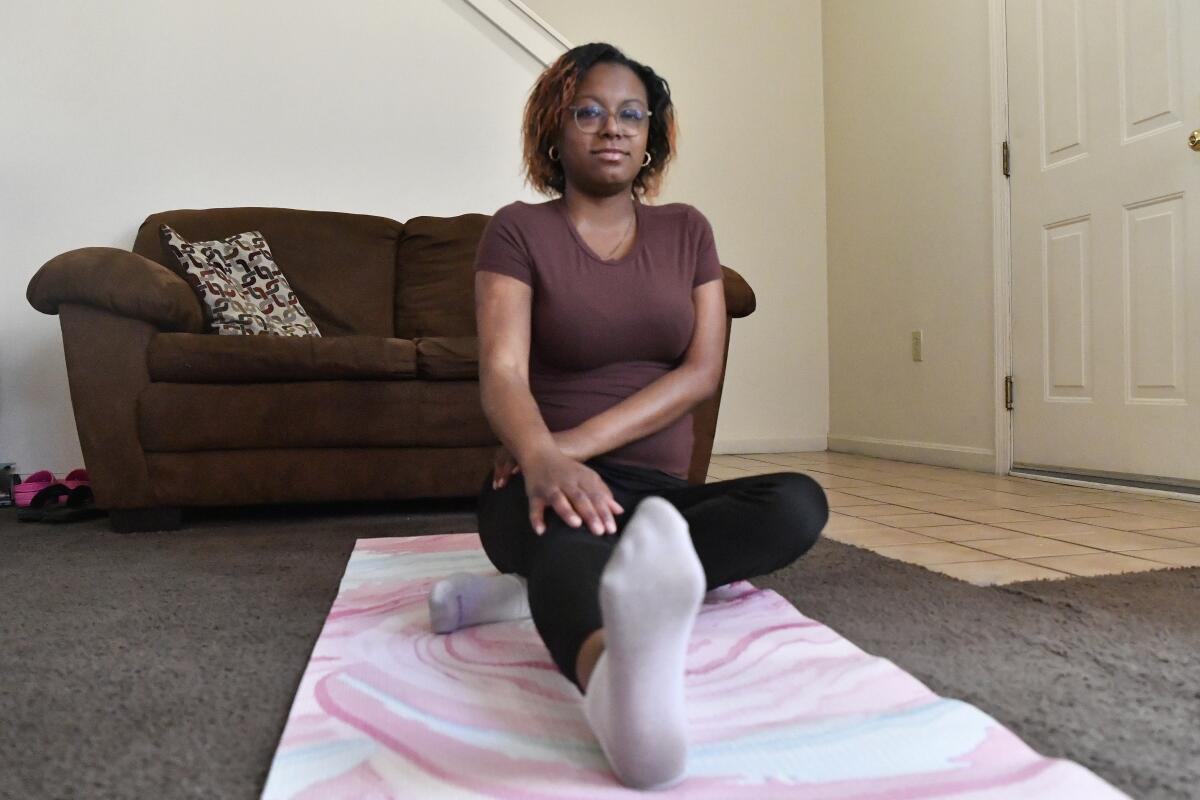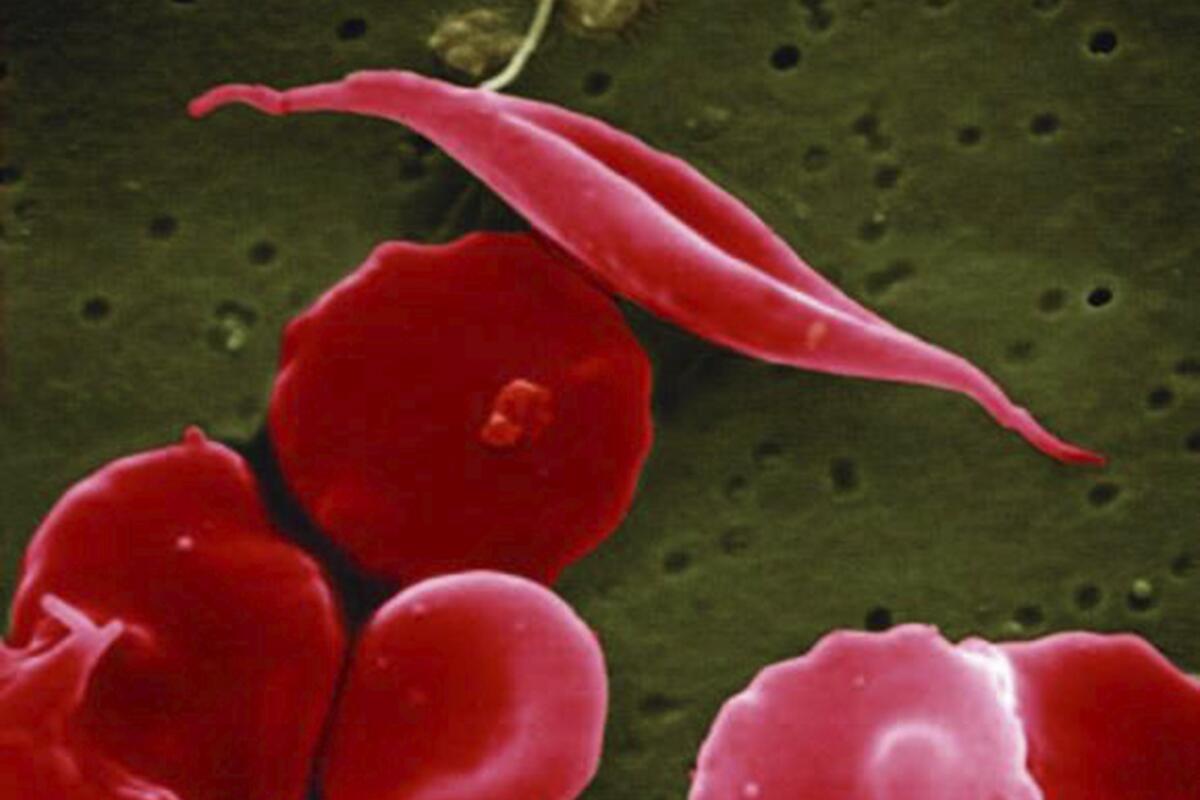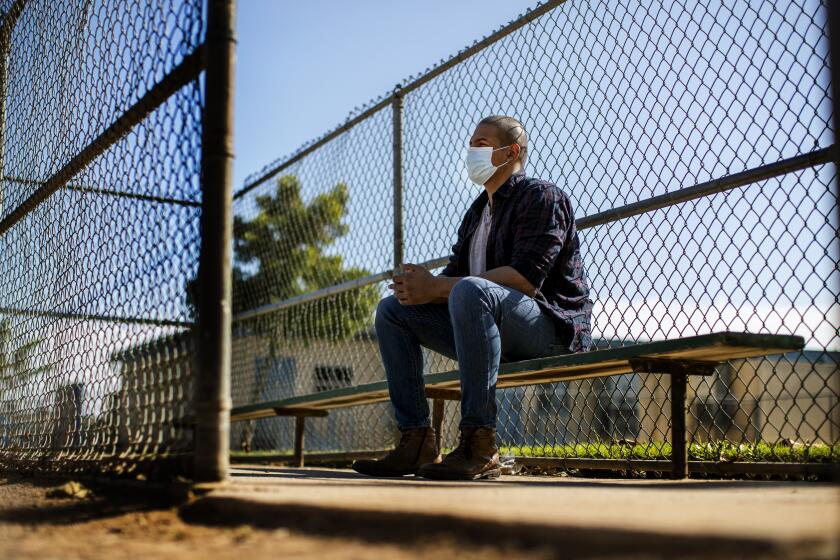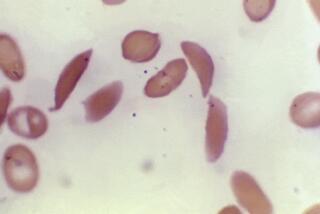Gene therapy offers new hope for sickle cell disease cure

- Share via
Regulators on Friday approved two new gene therapies for sickle cell disease that doctors hope can cure the painful, inherited blood disorder that afflicts mostly Black people in the U.S.
The Food and Drug Administration said the one-time treatments can be used for patients 12 and older with severe forms of the disease. One, made by Vertex Pharmaceuticals and CRISPR Therapeutics, is the first approved therapy based on CRISPR, the gene editing tool that won its inventors the Nobel Prize in 2020. The other is made by Bluebird Bio and works differently.
“Sickle cell disease is a rare, debilitating and life-threatening blood disorder with significant unmet need,” the FDA’s Dr. Nicole Verdun said in a statement announcing the approvals. “We are excited to advance the field especially for individuals whose lives have been severely disrupted by the disease.”
The two gene therapies are the first approved in the U.S. for sickle cell disease. The FDA has previously authorized 15 gene therapies for other conditions.
The promise of a revolutionary gene-editing technology is beginning to be realized in experiments aimed at curing sickle cell disease.
In the U.S., an estimated 100,000 people have the disease and about a fifth of them have the severe form. Sickle cell is most common among Black people, and 1 in 365 Black babies are born with the disease nationally. Scientists believe being a carrier of the sickle cell trait helps protect against severe malaria, so the disease occurs more often in mosquito-prone regions such as Africa or in people whose ancestors lived in those places.
The disease affects hemoglobin, the protein in red blood cells that carries oxygen. A genetic mutation causes the cells to become sickle- or crescent-shaped, which can block blood flow, causing excruciating pain, organ damage, stroke and other problems.
Current treatments include medications and blood transfusions. The only permanent solution is a bone marrow transplant, which must come from a closely matched donor without the disease and brings a risk of rejection.
No donor is required for the gene therapies, which permanently change DNA in a patient’s blood cells. The goal of the Vertex therapy, called Casgevy, is to help the body go back to producing a fetal form of hemoglobin that’s present at birth — it’s the adult form that’s defective in people with sickle cell. CRISPR is used to knock out a gene in stem cells collected from the patient.

Bluebird’s treatment, called Lyfgenia, aims to add copies of a modified gene, which helps red blood cells produce “anti-sickling” hemoglobin that prevents or reverses misshapen cells.
When patients get the treatments, stem cells are removed from their blood and sent to a lab. Before getting the altered cells back, they must undergo chemotherapy. The process requires at least two hospitalizations, one lasting four to six weeks.
Still, many patients say they’d consider gene therapy given the seriousness of the disease.
Jalen Matthews of Louisville, Ky., was diagnosed with sickle cell at birth and had her first pain episode at age 9. Three years later, the disease led to a spinal cord stroke that left her with some paralysis in her left arm and leg.
“I had to learn how to walk again, feed myself, clothe myself, basically learn how to do everything all over again,” said Matthews, now 26.
Today, she keeps her sickle cell at bay with transfusions every two months or so, with five units of her blood replaced with healthy cells. She said gene therapy could be a better option and she plans to ask her doctor about it.
“This one-time kind of cure is very much needed,” she said.
CRISPR is having a moment.
The FDA’s approval is the first for Bluebird’s treatment; Vertex has been authorized in Britain and Bahrain.
Studies testing the therapies suggest they work well. Of 31 people treated in the pivotal Vertex study with sufficient follow-up, 29 were free of pain crises for at least a year. In the Bluebird study, 28 of 32 patients had no severe pain or organ damage between six and 18 months after the therapy.
But doctors point out there are possible side effects and the long-term outcomes are unknown. For both, the necessary chemotherapy comes with risks such as infertility, hair loss and vulnerability to serious infection.
With the Bluebird therapy, blood cancer has occurred, so the FDA said the label will include a “black box warning” about that risk.
With the Vertex therapy, some scientists worry that CRISPR brings the possibility of “off-target effects,” which are unexpected changes to a person’s genome.
“It’s important to be cautious and to be optimistic about this therapy, but also know that there’s still not a ton of experience with it,” said Dr. Benjamin Watkins, director of the pediatric stem cell and cell therapy program at Children’s Hospital New Orleans.
Black people are the overwhelming victims of sickle cell anemia. An experimental gene therapy being tested on Evie Junior, 27, gives him reason to feel positive.
Doctors said they don’t expect every medical center to offer the gene therapies because they require so much equipment and coordination among medical specialists. They also don’t expect lots of people to seek them right away. Watkins said some may want to wait until more people get the treatments.
But eventually, gene therapy “could be transformative and really change the landscape of sickle cell disease,” said Dr. Monica Bhatia, who treats children with the disease at New York-Presbyterian.
Matthews, who volunteers with the Sickle Cell Assn. of Kentuckiana, said she’s hopeful the treatments will have a big impact. “It’s a blessing,” she said. “It will really benefit all of us in the sickle cell community.”








